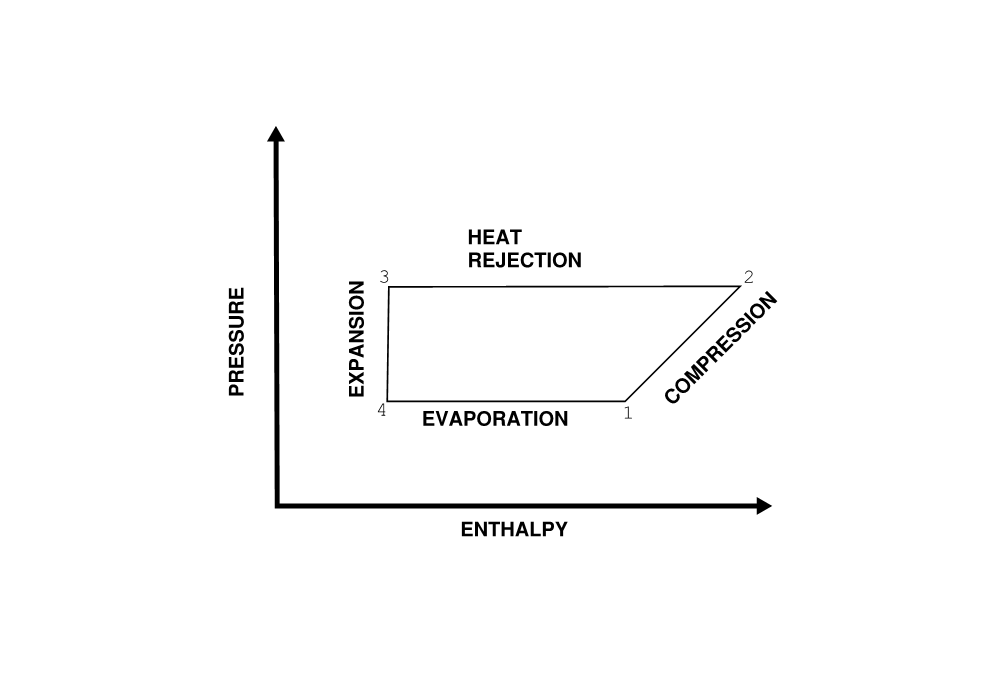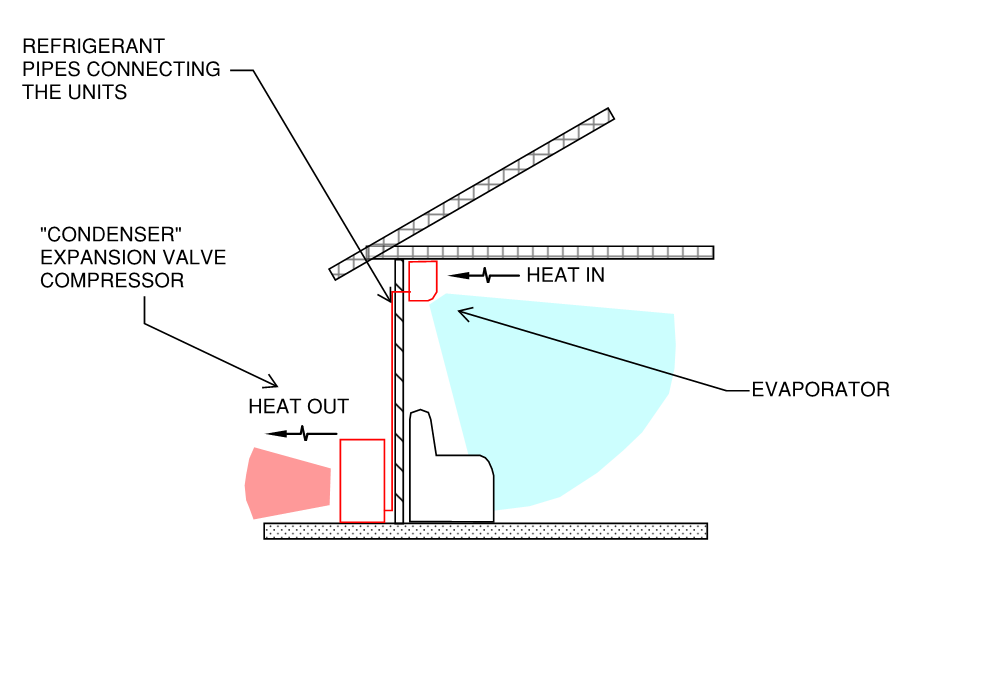The Refrigeration Cycle
Air conditioning is based upon the “refrigeration cycle”, which relies on pressure and volume changes in the working fluid to draw heat from one environment to another. The cycle can vary widely based upon the components of the system and the desired energy and control outcomes; however the fundamentals remain the same. The basic components of the cycle are shown in figure 1.
Figure 1 - Refrigeration Cycle Components
Typically the cycle, and AC units in general are referred to when they are in cooling mode. The cycle is created by four main components; the evaporator, the condenser, the expansion valve and compressor. The expansion valve creates a pressure drop to allow the working fluid to enter the evaporator as a liquid and vapour mix. Once inside the evaporator the fluid receives energy from the environment resulting in a uniform vapour state and a cold side to the system. The vapour is than compressed by the compressor to send the high-pressure vapour into the condenser. The condenser allows for the working fluid to condense into a liquid state once again, by rejecting the heat to, typically, a different, isolated environment.
Thus if the cycle is operating in the opposite direction the converse will happen, and the heating and cooling cycles are derived.
Hence the term “Reverse Cycle Air Conditioner” is born, a unit, which can inverse refrigerant flow direction to induce room cooling or heating.
Ultimately each component works to alter either the pressure or enthalpy of the system, hence moving heat energy from one location to another, as shown in figure 2.
Figure 2 - Refrigeration Cycle PH Diagram
While failure of any of the four components would result in the system ultimately ceasing to function, increases in efficiency (which are often government mandated), are largely derived from either more controllable compressors, resulting in less time at full load or larger condenser and evaporator coils resulting in higher total unit capacity.
Figure 3 - Split Air Conditioning Diagram
In Your Home
Air conditioning, in your home will resemble what is shown in figure 3. an indoor unit which takes in heat i.e leaving the room cooler, and an outdoor unit which rejects the heat effectively making outside hotter. The outdoor unit will contain the expansion valve, compressor and condenser and both parts of the system use specilised fans to increase airflow over the evaporator and condenser coils to increase the amount of heat that they can reject.




